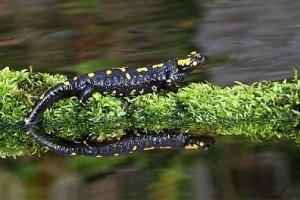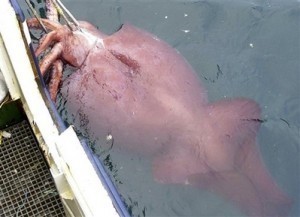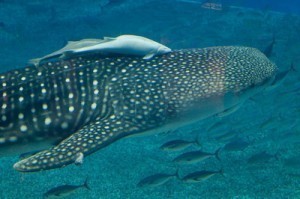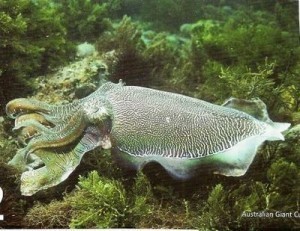Biggest Fish Ever
Rhincodon typus, also known as the Whale Shark, is the sole member 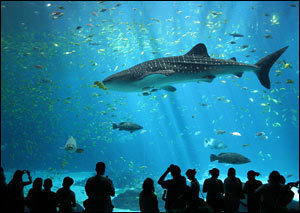 of the Rhincodontidae family and its genus Rhincodon. It is so named for its size, which is comparable to that of a whale, thus making it the biggest fish in the world.
of the Rhincodontidae family and its genus Rhincodon. It is so named for its size, which is comparable to that of a whale, thus making it the biggest fish in the world.
The whale shark was first discovered in April 1828, after a specimen measuring 4.6 meters (15.1 feet) was harpooned in Table Bay, South Africa. Since then, there had been reports of large-sized species being observed, though many of these have been unsubstantiated. In 1868, an Irish zoologist named Edward Perceval Wright allegedly sighted whale sharks measuring more than 15 m (49.2 ft) and referred to claims of others that had reportedly measured over 21 m (68.9 ft) in size.
There was an account from 1919 of a whale shark that had gotten ensnared in a bamboo fish trap in Thailand. Supposedly too heavy to be taken to the shore, it was estimated to be no less than 17 m (56 ft) in length and around 27 tons (82,000 lbs) in weight. Recent recountings of the same incident have jacked up the size to a more accurate 17.98 m (58.99 ft) long and 43 tons (95,000 lbs) in mass. There was an alleged encounter in 1934 between a ship and a whale shark in the South Pacific. The shark was said to have rammed the ship and ended up getting stuck on its prow, with apparently 4.6 m (15.1 ft) of it on one end and 12.2 m (40.0 ft) on the opposite side.
The whale shark’s claim to being the biggest fish ever would eventually be confirmed. The largest recorded whale shark was caught near Karachi, Pakistan’s Baba Island on November 11, 1947. The specimen measured 12.65 m (41.50 ft) in length, over 21.5 tons (47,000 lbs) in weight, and 7 m (23.0 ft) in girth. In 1994, a whale shark was caught in southern Taiwan’s Tainan County, and was said to have a weight of 35.8 tons (79,000 lbs). There have also been reports of whale sharks measuring up to a length of 23 m (75 ft).
The origins of the whale shark can be traced back to approximately 60,000,000 years ago. It has a lifespan of around 70 years, and it thrives in warm and tropical oceans. Among the places it can be spotted in are the southern and eastern coasts of South Africa, the island of Nosy Be off the northwest coast of Madagascar, Western Australia’s Ningaloo Reef, Indonesia’s Ujung Kulon National Park, and the provinces of Batangas, Donsol and Pasacao in the Philippines. A filter feeder, its diet consists of plankton, algae, smaller marine animals such as krill, squid and small fish, and the larvae of the Christmas Island red crab.
